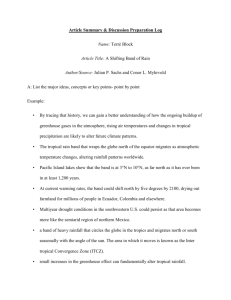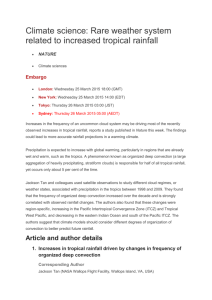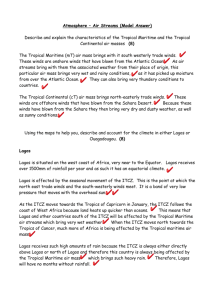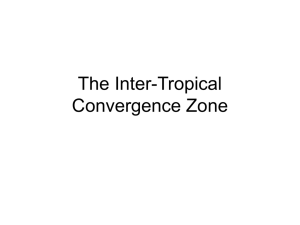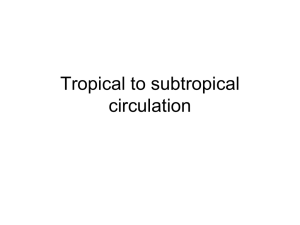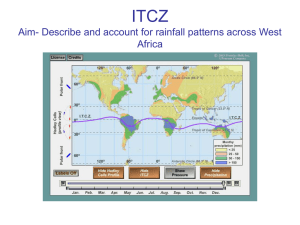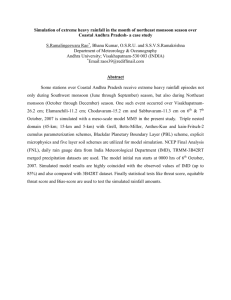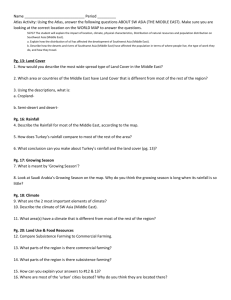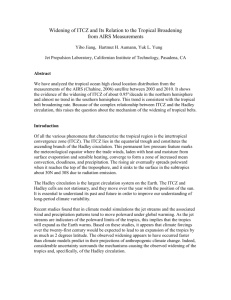With reference to the Inter-Tropical Convergence
advertisement
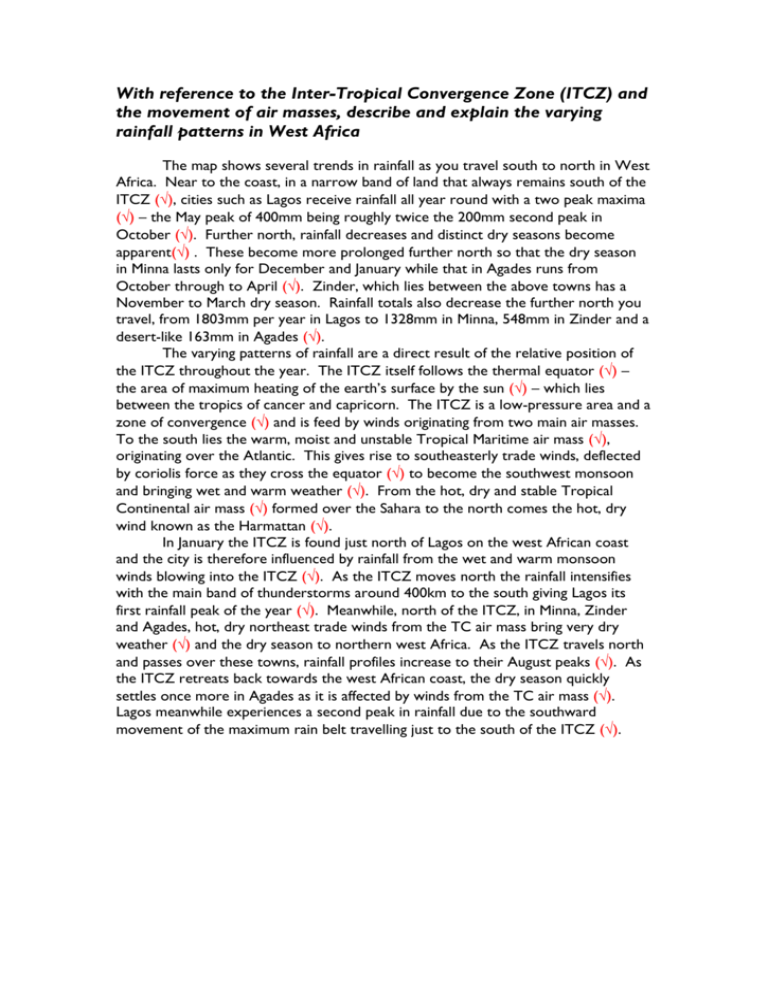
With reference to the Inter-Tropical Convergence Zone (ITCZ) and the movement of air masses, describe and explain the varying rainfall patterns in West Africa The map shows several trends in rainfall as you travel south to north in West Africa. Near to the coast, in a narrow band of land that always remains south of the ITCZ (√), cities such as Lagos receive rainfall all year round with a two peak maxima (√) – the May peak of 400mm being roughly twice the 200mm second peak in October (√). Further north, rainfall decreases and distinct dry seasons become apparent(√) . These become more prolonged further north so that the dry season in Minna lasts only for December and January while that in Agades runs from October through to April (√). Zinder, which lies between the above towns has a November to March dry season. Rainfall totals also decrease the further north you travel, from 1803mm per year in Lagos to 1328mm in Minna, 548mm in Zinder and a desert-like 163mm in Agades (√). The varying patterns of rainfall are a direct result of the relative position of the ITCZ throughout the year. The ITCZ itself follows the thermal equator (√) – the area of maximum heating of the earth’s surface by the sun (√) – which lies between the tropics of cancer and capricorn. The ITCZ is a low-pressure area and a zone of convergence (√) and is feed by winds originating from two main air masses. To the south lies the warm, moist and unstable Tropical Maritime air mass (√), originating over the Atlantic. This gives rise to southeasterly trade winds, deflected by coriolis force as they cross the equator (√) to become the southwest monsoon and bringing wet and warm weather (√). From the hot, dry and stable Tropical Continental air mass (√) formed over the Sahara to the north comes the hot, dry wind known as the Harmattan (√). In January the ITCZ is found just north of Lagos on the west African coast and the city is therefore influenced by rainfall from the wet and warm monsoon winds blowing into the ITCZ (√). As the ITCZ moves north the rainfall intensifies with the main band of thunderstorms around 400km to the south giving Lagos its first rainfall peak of the year (√). Meanwhile, north of the ITCZ, in Minna, Zinder and Agades, hot, dry northeast trade winds from the TC air mass bring very dry weather (√) and the dry season to northern west Africa. As the ITCZ travels north and passes over these towns, rainfall profiles increase to their August peaks (√). As the ITCZ retreats back towards the west African coast, the dry season quickly settles once more in Agades as it is affected by winds from the TC air mass (√). Lagos meanwhile experiences a second peak in rainfall due to the southward movement of the maximum rain belt travelling just to the south of the ITCZ (√).

